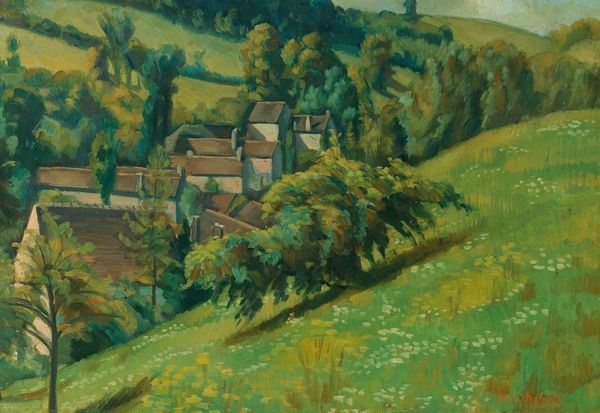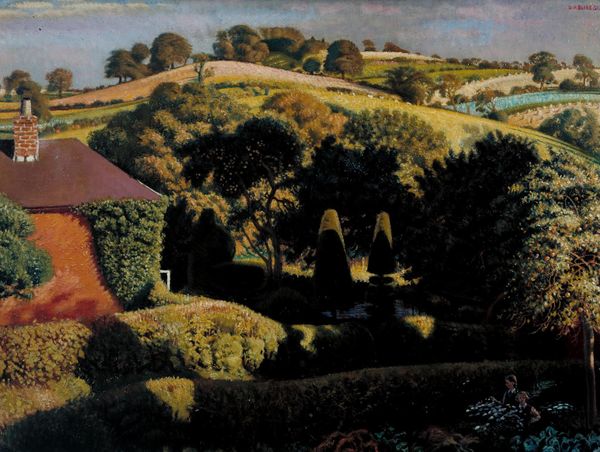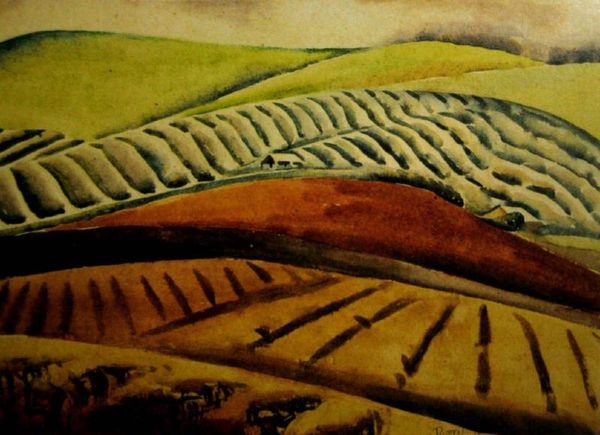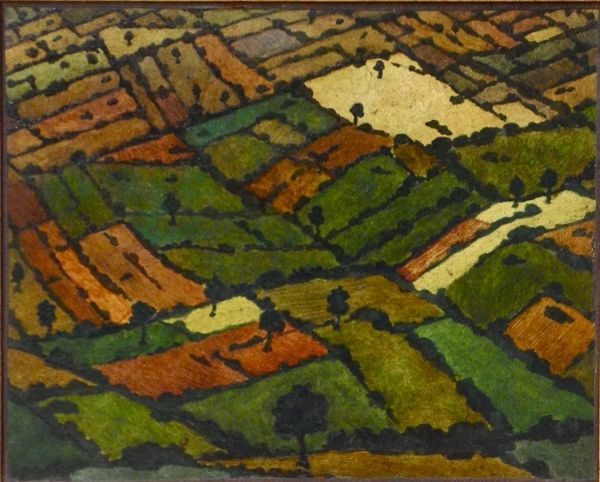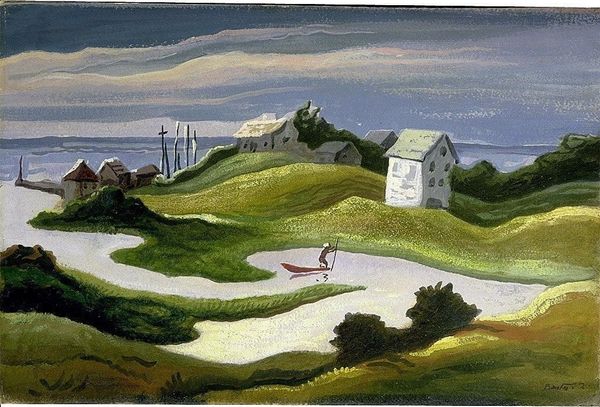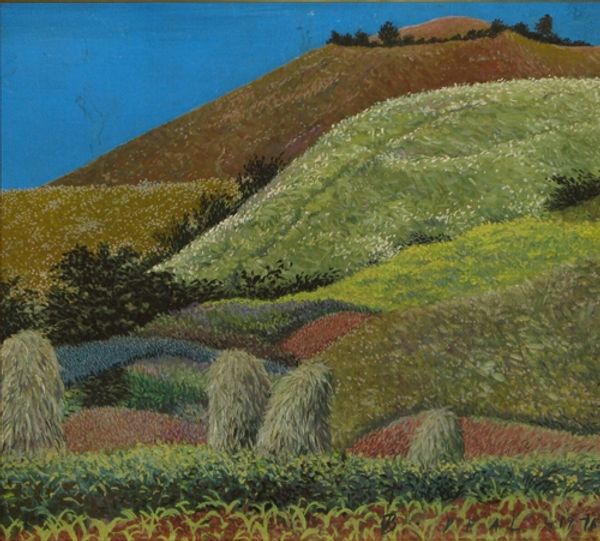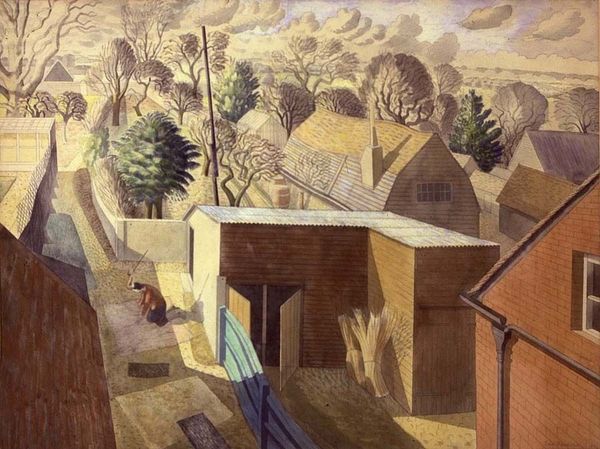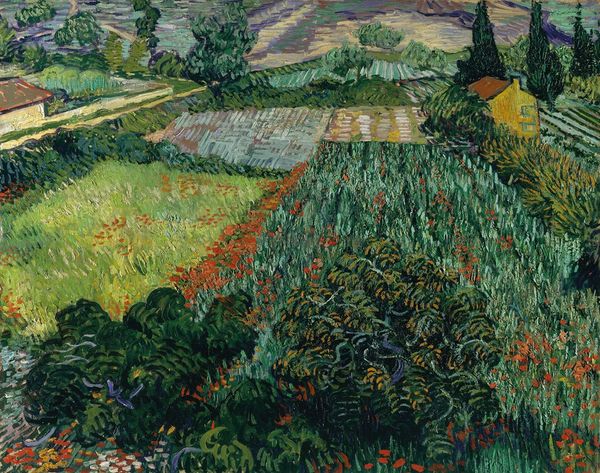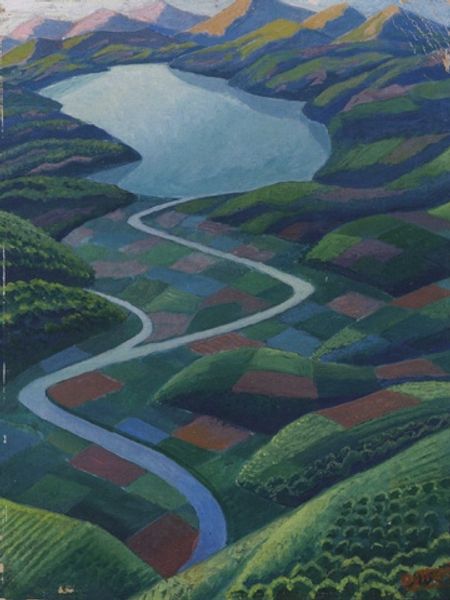
painting, oil-paint
#
painting
#
oil-paint
#
landscape
#
coloured pencil
#
genre-painting
#
regionalism
#
watercolor
#
realism
Dimensions: overall: 32.8 x 37.7 cm (12 15/16 x 14 13/16 in.) framed: 53.3 x 58.4 cm (21 x 23 in.)
Copyright: National Gallery of Art: CC0 1.0
Grant Wood is widely recognised for his iconic American Gothic (1930), but did you know that the American artist mostly painted landscapes? Born in Iowa (a state in the Midwest of the United States) in 1891, Grant Wood specialised in optimistic and idealised images of rural life. In this oil painting from 1939, Wood uses a soft colour palette and neat lines to create a pleasing simplicity. The golden fields and gently rolling hills are almost dreamlike. You can nearly imagine yourself weaving in and out of the geometric shapes. There is a complete absence of human figures in Haying, yet the presence of people is represented by the barn in the far distance. Against the open scale of the field, the barn symbolises stability and prosperity. Here, Wood emphasises the pride he feels in his nation. His naïve landscapes preserve a pastoral image of America, away from the industrialism and economic difficulties of the country at this time. Instead of tackling these overwhelming themes through modern art styles such as Abstract Expressionism, Wood infuses his invented America with a playful tranquillity. The version of America here highlighted by Wood is unrealistic, yet may have offered a sense of comfort during the tumultuous context of the 1930s. The Great Depression, the most significant financial crisis in US history, lasted until 1941. This was the same year that the country became officially involved in World War Two. So, what do you think? Should artists aim to reflect the realities of their time? 💭🗞️ Editor: Lucy Jude Grantham


